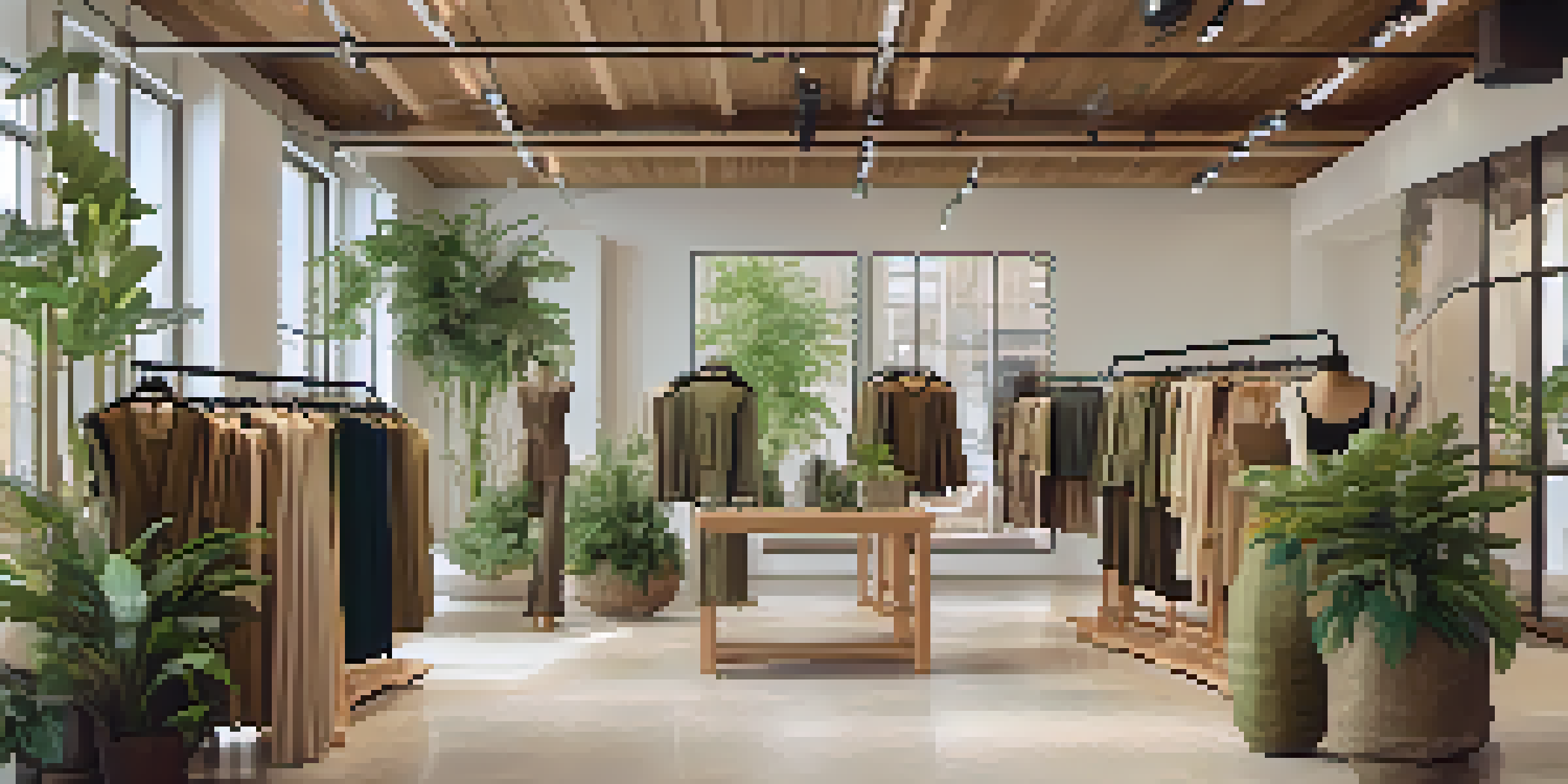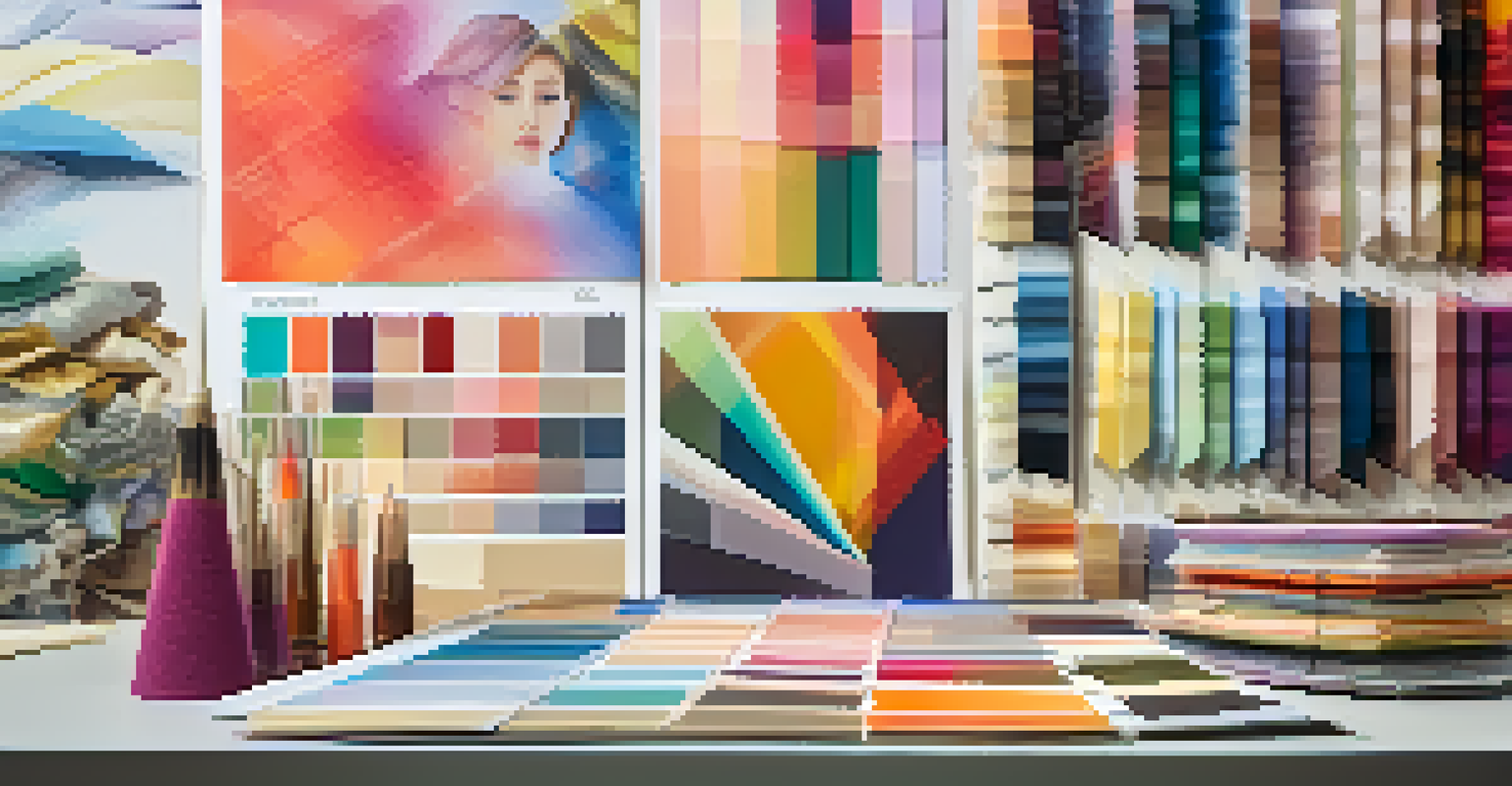Understanding Fashion Forecasting: Tools and Techniques Explained

What is Fashion Forecasting and Why Does it Matter?
Fashion forecasting is the art and science of predicting upcoming trends in the fashion industry. By analyzing various factors such as societal shifts, cultural influences, and consumer behavior, forecasters help brands stay ahead of the curve. This process is crucial for designers and retailers as it influences everything from fabric choices to marketing strategies.
Fashion is the armor to survive the reality of everyday life.
Imagine walking into a store and seeing the same styles everywhere, which can feel stale and uninspired. Fashion forecasting helps avoid this by ensuring that new and innovative designs resonate with consumers. It’s not just about predicting what colors will be in vogue; it’s about understanding the lifestyle and mindset of the target audience.
In a world where trends can change overnight, effective forecasting can be the difference between a hit collection and a complete flop. It allows brands to create relevant and appealing products that speak to their customers, fostering brand loyalty and driving sales.
Key Tools Used in Fashion Forecasting
When it comes to fashion forecasting, several tools can help professionals gather vital data. Trend analysis platforms, social media monitoring tools, and consumer insight software are just a few of the resources utilized to predict future trends. These tools collect information from various sources, including fashion shows, street style, and even online searches.

For instance, platforms like WGSN provide comprehensive trend reports that include everything from color palettes to fabric recommendations. This allows designers to visualize how trends will evolve and adapt their designs accordingly. By leveraging these tools, fashion professionals can make informed decisions grounded in data rather than guesswork.
Fashion Forecasting Drives Innovation
By predicting trends through societal and cultural analysis, fashion forecasting helps brands create relevant designs that resonate with consumers.
Moreover, technology plays a significant role in streamlining the forecasting process. Artificial intelligence and machine learning algorithms can analyze patterns and predict consumer preferences, making the forecasting process not only more accurate but also faster.
Techniques for Accurate Fashion Forecasting
Fashion forecasting isn't just about using tools; it's also about employing various techniques to interpret the data effectively. Qualitative methods, like focus groups and interviews, gather direct input from consumers, providing insights into their desires and preferences. On the flip side, quantitative methods, such as analyzing sales data and online trends, offer a broader view of market behaviors.
The best way to predict the future is to create it.
Combining these techniques allows forecasters to create a well-rounded perspective on upcoming trends. For example, while a focus group might reveal a desire for sustainable fashion, sales data could show a spike in interest for specific eco-friendly brands. This intersection of qualitative and quantitative data creates a more robust forecasting model.
Additionally, visual trend boards are often used to communicate ideas and concepts that arise during the forecasting process. By compiling images, colors, and textures, forecasters can visualize trends and share their insights with design teams in an engaging way.
The Role of Cultural Influences in Fashion Forecasting
Cultural influences play a pivotal role in shaping fashion trends. From political movements to global events, these factors can drastically alter consumer behavior and preferences. For example, during times of economic uncertainty, people may gravitate towards minimalist designs that emphasize practicality over extravagance.
Fashion forecasters must keep a finger on the pulse of societal changes to accurately predict how these influences will manifest in clothing styles. This means staying updated on cultural phenomena, such as popular films, music festivals, and social movements. These elements often inspire collections and resonate with consumers on an emotional level.
Technology Enhances Trend Analysis
The use of digital tools and social media insights allows forecasters to quickly identify emerging trends and adapt strategies accordingly.
Additionally, understanding cultural diversity helps brands connect with a broader audience. By incorporating elements from different cultures into their designs, brands can create unique products that appeal to a wide range of consumers, fostering inclusivity and relevance.
The Impact of Technology on Fashion Forecasting
Technology has revolutionized fashion forecasting, making it more precise and accessible. Digital tools allow forecasters to analyze vast amounts of data quickly, uncovering trends that may not be immediately apparent. Social media platforms like Instagram and TikTok are particularly influential, as they provide real-time insights into consumer preferences and emerging styles.
For example, the rapid rise of TikTok trends can significantly impact fashion, with styles gaining popularity almost overnight. Forecasters who monitor these platforms can anticipate shifts in consumer behavior and adjust their predictions accordingly. This agility is essential in a fast-paced industry where trends can change rapidly.
Moreover, virtual reality and augmented reality technologies are becoming increasingly relevant in fashion forecasting. They allow designers to visualize their creations in a virtual space, enabling them to experiment with colors, styles, and patterns before they hit the market.
Collaboration in Fashion Forecasting
Collaboration is key in the world of fashion forecasting, as it brings together diverse perspectives and expertise. Designers, marketers, and trend forecasters often work hand in hand to ensure that a collection is not only stylish but also in tune with consumer expectations. This teamwork fosters creativity and innovation, leading to successful fashion lines.
For instance, a fashion brand might collaborate with a trend forecasting agency to create a seasonal collection that resonates with current consumer desires. This partnership allows the brand to benefit from the agency's insights and helps the forecasters understand the brand's vision and target audience.
Collaboration Fuels Creative Success
Working together, designers, marketers, and forecasters can align their visions to produce collections that meet consumer expectations and trends.
Additionally, collaborations with influencers and industry leaders can enhance the forecasting process. By engaging with those who have a pulse on consumer trends, brands can gather fresh insights and ideas that inform their designs, ultimately leading to a more relevant and appealing product line.
The Future of Fashion Forecasting: What Lies Ahead?
As we look to the future, fashion forecasting is poised to evolve even further. With advancements in technology, forecasters can expect more sophisticated tools that provide deeper insights into consumer behavior. Predictive analytics, for instance, will become increasingly important, allowing brands to anticipate trends before they fully emerge.
Moreover, sustainability is likely to play a significant role in future forecasting. As consumers become more eco-conscious, forecasters will need to predict how these values will influence fashion trends. Brands that prioritize sustainability in their collections will likely have a competitive edge in the market.

Ultimately, the future of fashion forecasting lies in adaptability. As trends continue to shift, forecasters must remain flexible, embracing new tools and techniques while staying true to the core principles of understanding consumer needs and cultural influences.